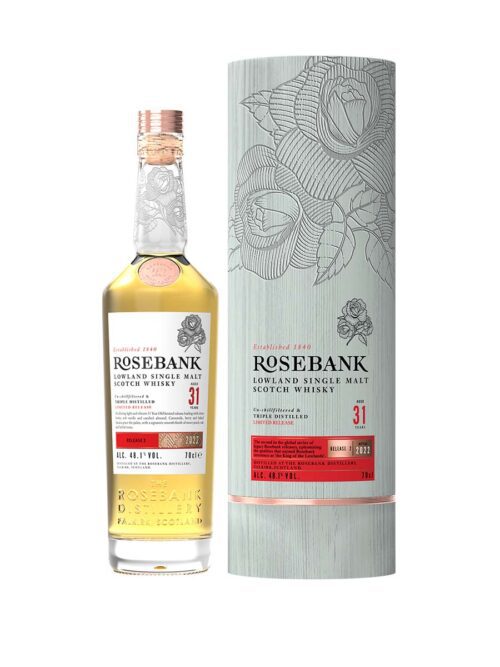History of Rosebank Distillery
It’s a rare thing to see a distillery which has been completely shuttered brought back to life, but in 2017, it was announced that Ian Macleod Distillers intend to reopen Rosebank, once considered the peak of Lowlands whisky.
It was first founded in 1840 by local wine merchant James Rankine on the banks of the Forth & Clyde Canal which links Glasgow and Edinburgh. Though there is evidence of whisky distilling taking place at this site as far back as 1798.
In 1914 it was one of the founding members of Scottish Malt Distillers, a conglomerate of Lowlands whisky producers. When SMD became part of Distillers Company Limited in 1925, Rosebank was one of the distilleries it acquired.
The first single malt release from Rosebank came out in 1982 as part of the Ascot Malt Cellar series from DCL. This also included bottlings from Linkwood, Talisker, and Lagavulin. However it missed out on the Classic Malts series, which instead chose to use Glenkinchie as its Lowlands representative to the puzzlement of many. Aside from closing for World Wars, Rosebank operated continuously until 1993 when it was mothballed by DCL.
Resurrecting Rosebank hasn’t been as simple as just buying the old distillery and throwing the doors wide. Diageo sold the buildings to British Waterways in 2002, and they have been left unused and degrading since then. To make matters worse, the stills and other equipment were stolen from the distillery over the Christmas and New Year’s period in 2008.
In 2017 Ian Macleod bought the site off Scottish Canals, the successor to British Waterways. At the same time they bought the brand and remaining stock from Diageo. Planning permission was granted to resurrect Rosebank.
Though Ian Macleod bought the site and remaining stock in 2017, they have yet to release any of it as single malt whisky. An obvious reason for this is that once the distillery reopens it’s going to take some time before the new spirits can age into distinguished whiskies. Hanging on to that stock to release in the interim period will keep people eager for more.
When the distillery reopens it intends to continue its traditional practices of triple distillation, which played a big part in Rosebank’s floral and lightly fruity Lowlands character. Worm tubs and copper worm tubes will also still be used for condensing the new spirits. It’s expected that at first the new distillery will have a production capacity of 600 - 800,000 litres.





